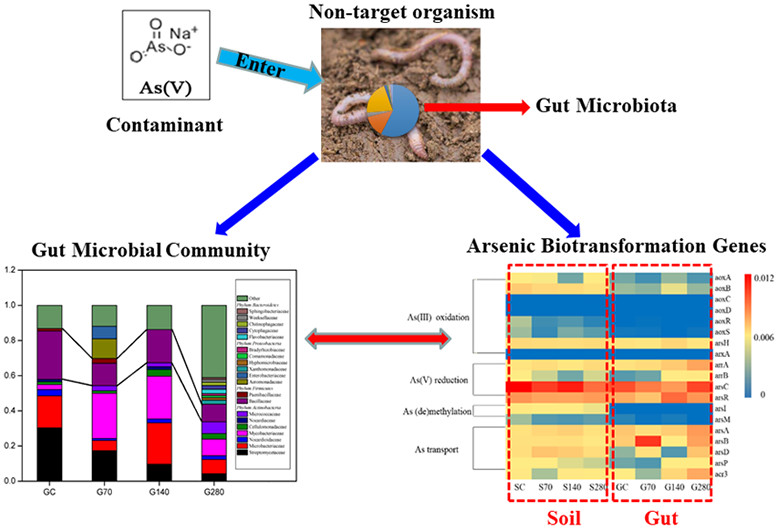Arsenic is a widely distributed and highly toxic environmental pollutant. Lots of arsenic compounds enter the farmland soil system through industrial discharge, animal husbandry and agricultural production, which not only cause poor growth of soil crops, even poses a threat to the health of people and animals. Earthworms are an extremely important repository of biodiversity in soil ecosystems and are often used as biomarkers for assessing soil health and quality, playing an important role in organic matter degradation, nutrient cycling and bioavailability of metal elements.
The arsenic pollutants entering the soil will be toxic to soil organisms. Previous studies have focused on the toxicological effects of arsenic on earthworms, and the bioaccumulation and species of arsenic in earthworms. The microbial-mediated arsenic conversion process in anaerobic environment also has an important influence on its species, migration and toxicity. However, there are few studies on the effects of arsenic contaminants on the bacterial community structure in the gut of soil animals and the correlation between arsenic metabolism genes and arsenic species.
Researcher Zhu Yong-guan group from Institute of Urban Environment (IUE), Chinese Academy of Sciences (CAS), estimated the arsenic-transforming microorganisms and metabolism in soil fauna anaerobic gut.
The results showed that Arsenite (As(III)) was the major component in the earthworm gut, while arsenate (As(V)) was predominant in the soil. Genes involved in arsenic redox and efflux were predominant in all samples, and the abundance of ABGs involved in arsenic methylation and demethylation in the gut was very low. These results reveal that the earthworm gut can be a reservoir of microbes with the capability of reducing As(V) and extruding As(III), but with little methylation of arsenic. Moreover, gut microbial communities were considerably different from those in the surrounding soil. These findings demonstrate that exposure to As(V) disturbs the gut microbiota of earthworms and provides some insights into arsenic biotransformation in the earthworm gut.
The study entitled "Effects of Arsenic on Gut Microbiota and Its Biotransformation Genes in Earthworm Metaphire sieboldi" was published in Journal of Environmental Science & Technology.
This research is financially supported by the National Key Research and Development Program of China and the National Natural Science Foundation of China.

Exposure to As(V) disturbs significantly the gut microbiota of the earthworm, and earthworm gut can be a reservoir of microbes with the capability of reducing As(V) and extruding As(III), but with little methylation of arsenic.